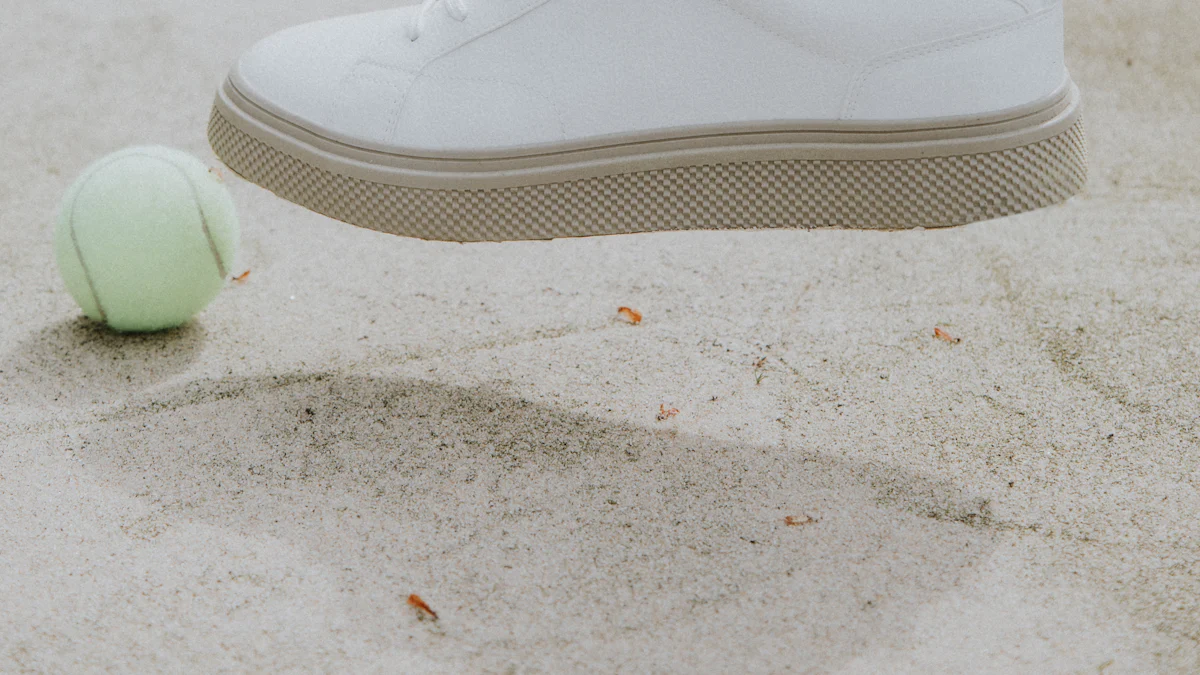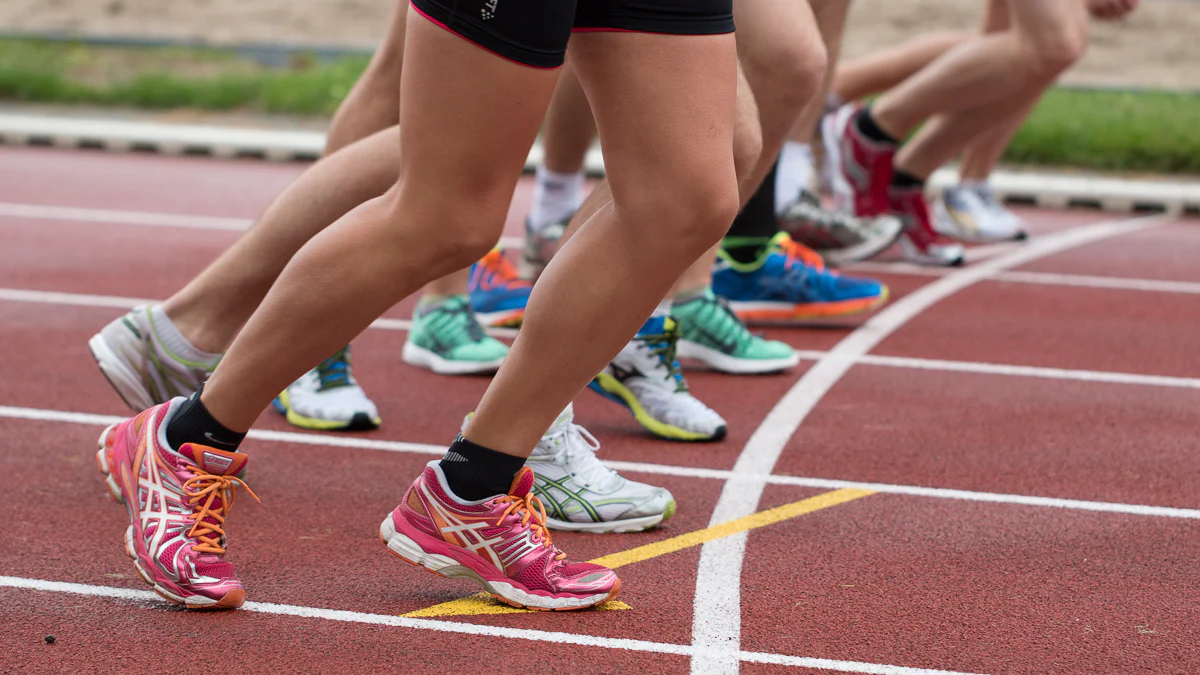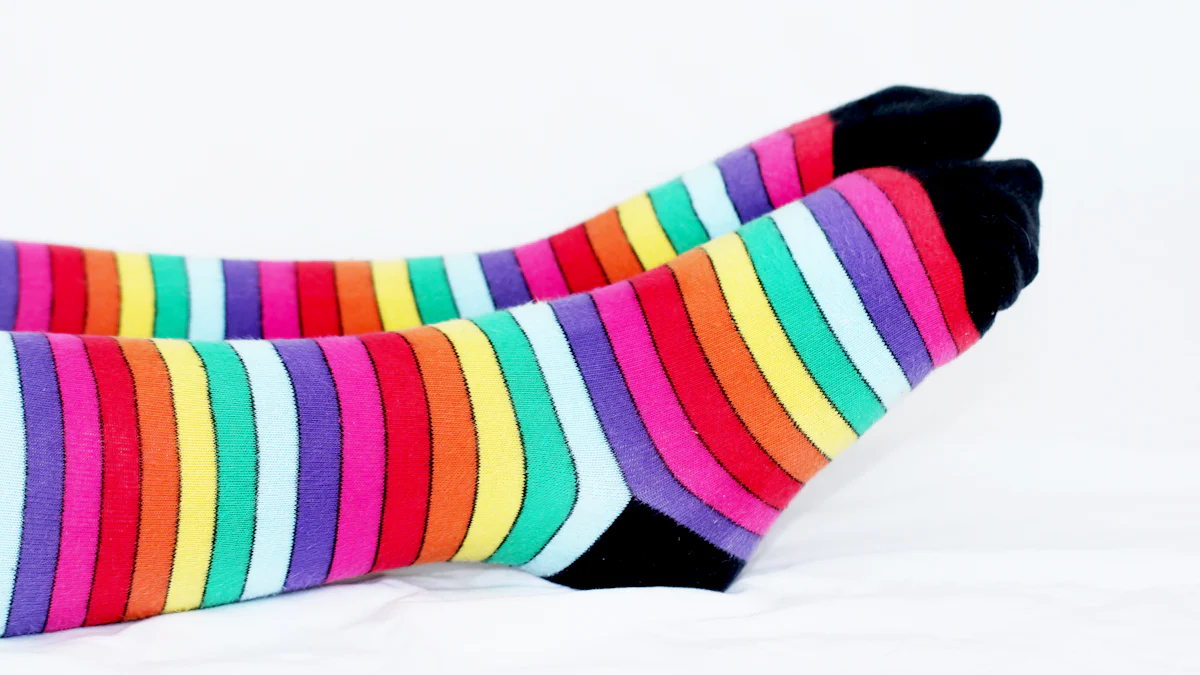
Choosing the right sports socks is crucial for any athlete. The correct pair can boost performance by providing protection and comfort. Different activities require specialized socks to meet specific demands. For instance, running socks often feature compression to improve blood circulation and reduce tiredness.
“The role of socks in preventing injury and enhancing performance is often misunderstood and neglected in treatment protocols.”
Proper socks can prevent workout-related foot problems, which are common due to wearing the wrong socks. Understanding these nuances will help you select the awesome sports socks for your activity.
Understanding the Basics of Sports Socks
Material Matters
Cotton vs. Synthetic
Choosing the right material for awesome sports socks is essential. Cotton socks feel soft and comfortable. However, cotton absorbs moisture and can lead to blisters. Synthetic materials like polyester and nylon offer better moisture management. These materials wick sweat away from your feet, keeping them dry and reducing the risk of blisters.
Moisture-Wicking Fabrics
Moisture-wicking fabrics are crucial for awesome sports socks. These fabrics pull sweat away from your skin. This keeps your feet dry and comfortable during intense activities. Look for socks labeled as moisture-wicking. These socks enhance performance and comfort.
Sock Length
Ankle Socks
Ankle socks are popular among runners and gym-goers. These socks provide minimal coverage. Ankle socks keep your feet cool and reduce bulk around your ankles. Choose ankle socks for activities that require agility and speed.
Crew Socks
Crew socks offer more coverage than ankle socks. These socks reach mid-calf and provide extra support. Crew socks are ideal for sports like basketball and tennis. The additional length protects your ankles from abrasions.
Knee-High Socks
Knee-high socks provide maximum coverage. These socks are perfect for sports like soccer and field hockey. Knee-high socks offer added protection and support. These socks also help keep your legs warm in colder conditions.
Cushioning and Thickness
Light Cushioning
Light cushioning provides minimal padding. These socks are suitable for activities that require a close fit. Lightly cushioned socks are ideal for cycling and track running. These socks offer a balance of comfort and performance.
Medium Cushioning
Medium cushioning offers more padding than light cushioning. These socks provide extra comfort without being too bulky. Medium-cushioned socks are great for hiking and gym workouts. These socks help absorb impact and reduce foot fatigue.
Heavy Cushioning
Heavy cushioning provides maximum padding. These socks are perfect for high-impact activities. Heavy-cushioned socks are ideal for long-distance running and hiking. These socks offer superior comfort and protection.
Choosing Socks Based on Activity

Running
Key Features for Running Socks
Running demands awesome sports socks that focus on breathability and moisture management. Running socks often use lightweight materials like nylon or polyester. These materials wick sweat away from your feet, keeping them dry. A snug fit reduces friction and prevents blisters. Compression features in running socks improve blood circulation. This reduces muscle fatigue during long runs.
Hiking
Key Features for Hiking Socks
Hiking requires awesome sports socks with excellent insulation and moisture management. Hiking socks often feature materials like merino wool or synthetic blends. These materials provide warmth and keep your feet dry. Reinforced toe and heel areas offer extra protection. Cushioning in hiking socks absorbs impact and provides comfort on rough terrains. Hiking socks also support your arches and ankles during long hikes.
Cycling
Key Features for Cycling Socks
Cycling needs awesome sports socks that prioritize breathability and a snug fit. Cycling socks use lightweight and breathable materials. These materials keep your feet cool and dry. Light cushioning provides comfort without adding bulk. A close fit reduces friction and enhances performance. Moisture-wicking properties in cycling socks prevent blisters and discomfort.
Gym and Fitness
Key Features for Gym Socks
Selecting the right awesome sports socks for gym workouts can enhance your performance and comfort. Gym socks should prioritize breathability and moisture management. Synthetic materials like polyester and nylon excel in these areas. These materials wick sweat away from your feet, keeping them dry during intense workouts.
Cushioning in gym socks provides comfort and support. Medium cushioning offers a balance between padding and bulk. This level of cushioning absorbs impact during activities like weightlifting and cardio exercises. Reinforced toe and heel areas add durability to withstand rigorous use.
A snug fit is essential for gym socks. A proper fit prevents slipping and reduces friction. This minimizes the risk of blisters and discomfort. Compression features in gym socks can improve blood circulation. Enhanced circulation reduces muscle fatigue and aids in recovery.
Gym socks should also offer arch support. Proper arch support helps maintain foot alignment and reduces strain. This feature is crucial for exercises that involve jumping or running. Look for socks with targeted compression zones for optimal support.
Additional Considerations

Fit and Sizing
How to Measure Your Feet
Properly measuring your feet ensures a good fit. Use a ruler or measuring tape. Measure the length from the heel to the longest toe. Measure the width at the widest part of the foot. Do this while standing for accurate results. Compare measurements to the sock size chart.
Importance of Proper Fit
A proper fit prevents discomfort and injury. Socks that are too tight can restrict blood flow. Loose socks can cause blisters due to friction. A snug fit offers better support and comfort. Always try on socks before purchasing if possible.
Durability and Longevity
Signs of Wear and Tear
Regularly inspect your socks for wear and tear. Look for thinning fabric, especially in high-friction areas like the heel and toe. Check for holes or stretched-out elastic. Discoloration can also indicate material breakdown. Replace worn-out socks to maintain performance and comfort.
Tips for Extending Sock Life
Proper care extends the life of your socks. Wash socks inside out to reduce friction. Use cold water and mild detergent. Avoid using bleach or fabric softeners. Air dry socks instead of using a dryer. Rotate between multiple pairs to reduce wear.
Price vs. Quality
Budget Options
Budget options offer basic features at a lower cost. Look for socks made of durable materials like polyester or nylon. These materials provide moisture-wicking properties. Budget socks may lack advanced features but still offer decent performance. Ideal for beginners or those on a tight budget.
Premium Options
Premium options offer advanced features and superior quality. Materials like merino wool or silver fibers enhance comfort and odor control. Reinforced stitching and seamless designs add durability. Premium socks often include extra cushioning and arch support. These socks provide the best performance and longevity.
Recap the key points to solidify your understanding. Choose the right sports socks to enhance performance and comfort. Select socks based on material, length, and cushioning. Consider the specific demands of each activity.
“The right socks can prevent injury and boost performance.”
For final tips:
- Measure your feet accurately.
- Inspect socks regularly for wear.
- Invest in quality materials like nylon or merino wool.
Make an informed choice to protect your feet and improve your athletic experience.

